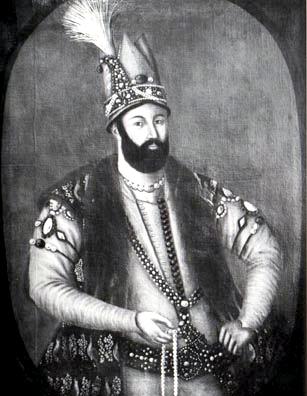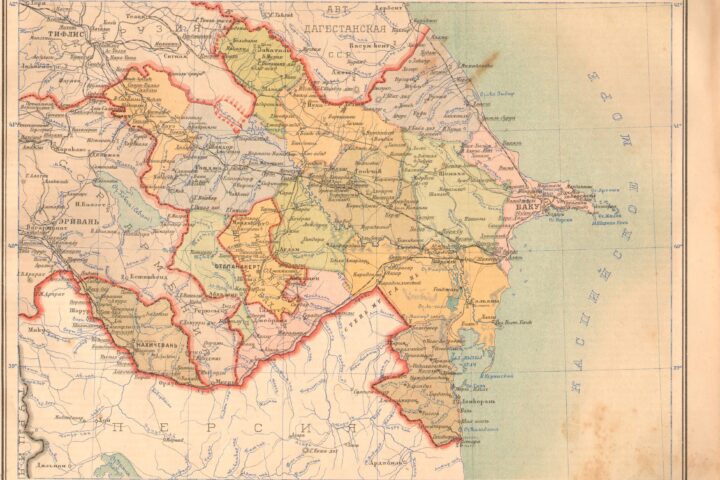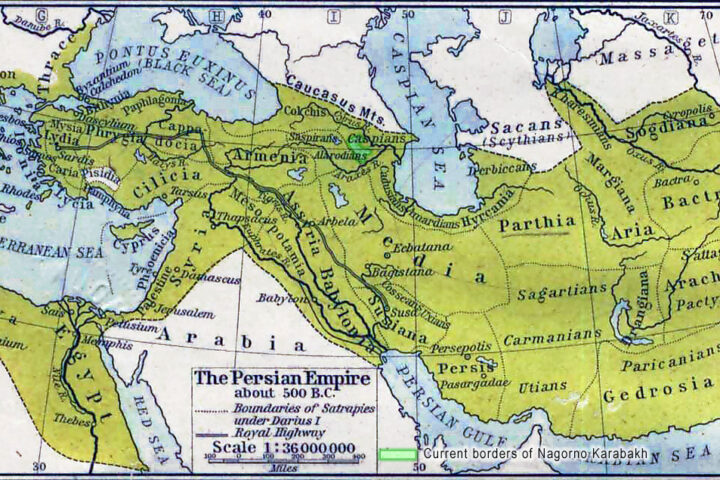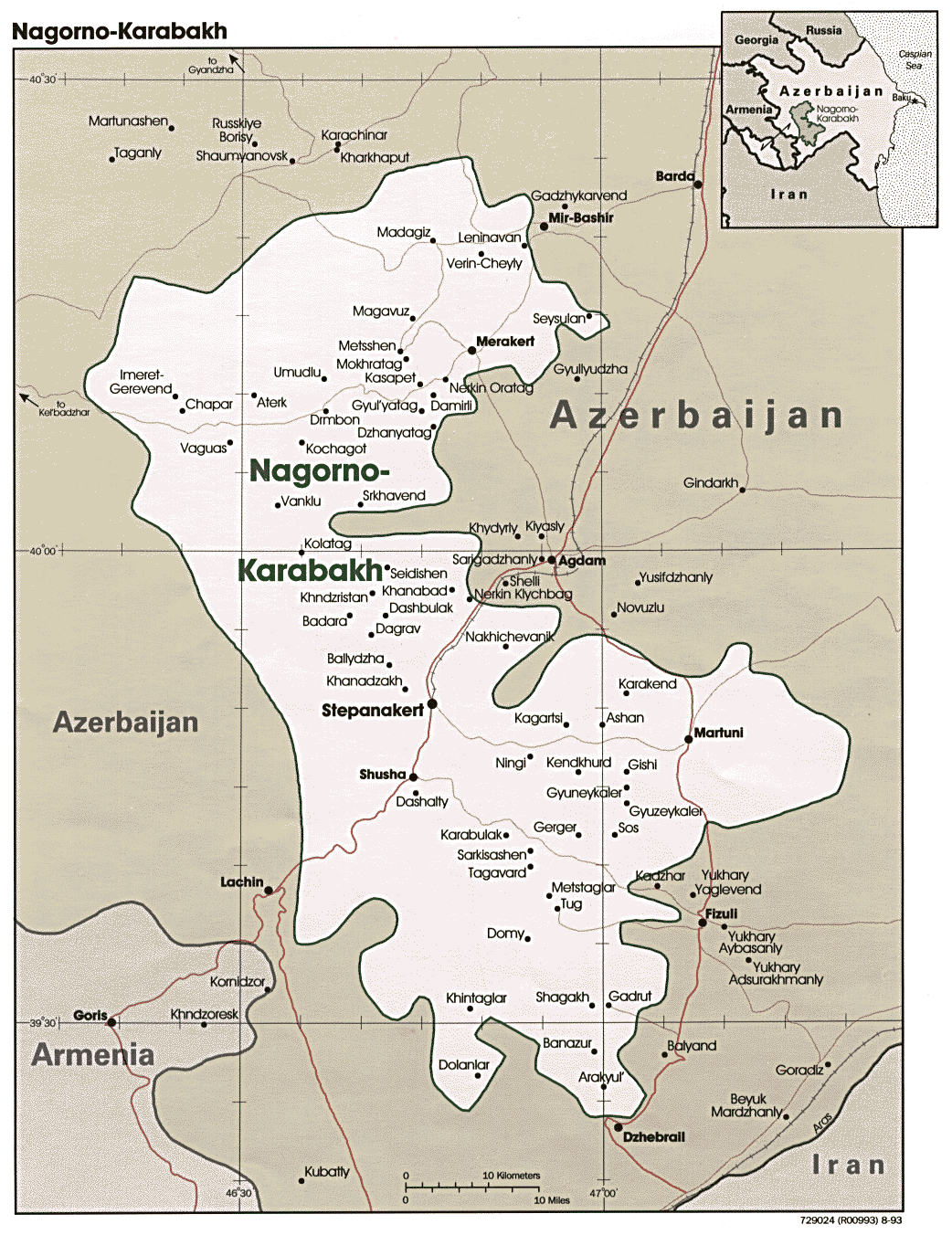The emergence of the Armenian national-socialist «Dashnaksutiun» party guided with an idea of «Greater Armenia» led to eruption of the first ethnic clashes between Azeris and Armenians.
Beginning of XX c. was marked with a splash of ethnic clashes in Russia, particularly between the local Azeris and Armenians. One of the premises for this phenomenon was the massive resettlement of Armenians during the whole XIX c. to the territories inhabited by Azeris. On the other hand, by the beginning of XX c. an evolution in the outlook of the Caucasian peoples took place and they began to seek cultural and territorial autonomy. That’s why, if the beginning of XX c. in Russia itself was a period of bourgeois and Bolshevik revolutions, then in the peripheries these movements have acquired a character of the national liberation movement.
But in the same time, the Czarist government, which didn’t want to lose its influence, have resorted to the policy of «divide and rule» and thus set the peoples against each other. Namely in this period there appeared an idea of «Greater Armenia from sea to sea» (meaning the Mediterranean, Black and Caspian seas) in the Armenian nationalist circles, particularly in the chauvinistic party «Dashnaksutiun». For achieving this end dashnaks decided to «clear» the territories, which they lay their claims from other peoples. In a number of cities of Caucasus- in Tiflis (present-day Tbilisi), Baku, Erivan (present-day Yerevan), Shusha etc. there were opened the local dashnak committees. During the Russian revolution of 1905-1907 dashnaks had well-trained and well-equipped armed detachments the number of which reached 100.000.[1] In a common rise of revolutionary movement in the beginning of the XX c., dashnaks waited for a favourable moment to begin implementing their plans. This moment came with the beginning of the Russian revolution of 1905. In February 1905 dashnaks provoked Armenian-Muslim carnage in Baku. Hundreds of people were killed and wounded. The Czarist government and police, in fact, was an indifferent observer of all these events. The conflict has swiftly passed from Baku to the regions. Ethnic clashes occurred in Tiflis, Ganje, Shusha, Erivan and other cities. Especially suffered the Azeri villages situated in the Armenian provinces (the Erivan gubernia) and in the regions adjacent to it (look the Azeri Genocide section for further details).
It should be noted, that the Armenian armed detachments appeared to be far more prepared in military training and equipment. The fact that in the Russian Empire the Azeri population was released from conscription also has had negative effects. Unarmed Azeris being unaware of the approaching threat had to face attacks of a well-prepared enemy. One of the official documents of that time informs: «…Armenians couldn’t hide their hatred to the Muslims [i.e. Azeris], and clashes between them took place. Seemingly, Muslims have underwent more casualties, a part of the territory was cleansed from them and a part was delimited»[2].
The main objective of the dashnaks in Karabakh was seizure of Shusha. Dashnaks hoped to cleanse it from the Azeri population constituting the majority of the towners and thus, considerably fortify their positions in Karabakh. The town was virtually divided into two- Azeri and Armenian parts. In the beginning of August 1905 during the first clash in the town, hundreds of people were killed and wounded, many houses of both Azeris and Armenians, were burned. Only on August 21 an armistice between the Azeri and Armenian population of the town was concluded.
In the end of 1905 dashnak bands organized new attacks, this time against the Azeri villages of Karabakh. Differently from last August campaign, this time the main purpose was banishment of Azeris not from town of Shusha, where the positions of Azeris were too strong, but from the Karabakh villages. They assumed that it would be easier to deal with Shusha being deprived from the support of the villages. Thus, as a result of dashnak attacks to the peaceful villages of the Jevanshir district of Karabakh, here survived only 30 people from the Azeri villages. Others, including women, children and old people were exterminated. But in January 1906 the Karabakh villagers have won an impressive victory over the advancing bands of the dashnak general Hamazasp, who «became famous» for killings of peaceful population of Karabakh. After this, a temporary ceasefire was established.
In June 1906 the center of events again switched to Shusha. This time, a body of a watchman-Armenian was found in the Muslim quarter of Shusha. As it consequently became clear, dashnaks killed him and threw to the Muslim quarter to discredit Azeris as provocateurs before the Russian officials. Their plan worked. The Russian district chief (nachalnik) Galashchanov supported dashnaks and subjected the Azeri quarters to the artillery bombardment. According to the eyewitnesses’ testimonies, Armenians paid Russian soldiers 15 roubles for every artillery shot to the Azeri part of the town.[3] Despite severe artillery bombardment, Shushavians contained the enemy assault till reinforcement from the adjacent Azeri villages came. During six days of hard street fighting Azeris won the battle and hurled the enemy back to its positions. Soon the situation in Karabakh normalized. As to Galashchanov, he was dismissed from the position he occupied.
- «Information about the organization and activities of the Armenian revolutionary party Dashnaksutiun» (Svedeniya ob organizacii i deyatelnosti armyanskoy revolyutsionnoy partii Dashnaksutiun) Special department of the office of the governor (namestnik) of the Caucasus April 17 1909 / Documents and Publications… p. 113;
- Id./ Id
- Mir Movsum Navvab «Armeno-Muslim fight of 1905-1906» (1905-1906ci iller ermeni-muselman davasi) Baku 1993 p. 114 (in Azeri);









